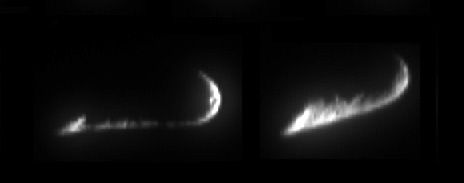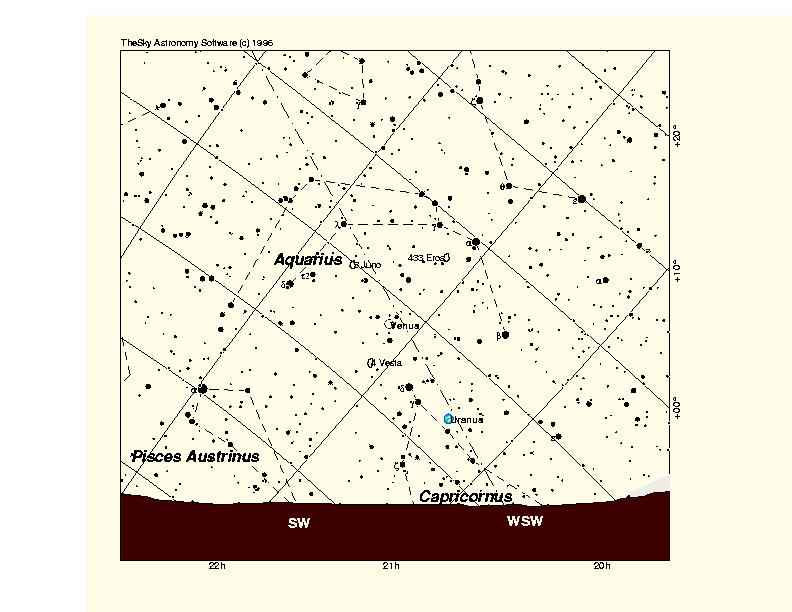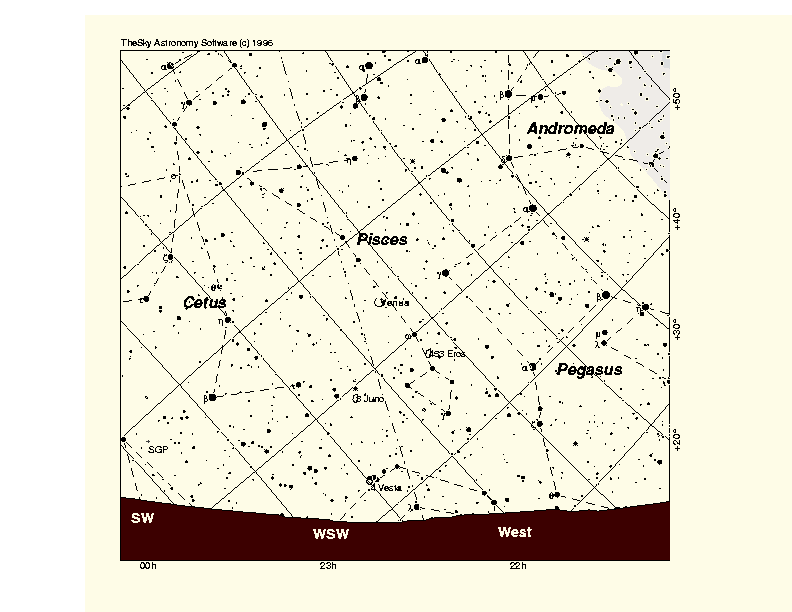The NEAR-Shoemaker Project's Eros "Monthly" Star Chart
Last updated: 18 January 2001

ORBITING 433 EROS!
News from January 2001

This sky chart shows the position of Eros and the NEAR-Shoemaker spacecraft during the beginning of January 2001. The constellations are shown for 8 pm local time as seen from a mid-northerly latitude. Eros is moving among constellations of the Zodiac -- moving from Aquarius into Pisces in February. Eros is very faint (14th magnitude), requiring an excellent backyard telescope for viewing. The chart also shows the locations of several other asteroids and planets near Eros, low in the southwestern sky during evening.

This star chart shows the position of Eros (and NEAR) on Feb. 12th, the day the spacecraft descends to the surface of Eros. Its position, in the constellation Pisces, can be viewed low in the southwestern sky after the end of twilight. The positions of Venus and the asteroids Vesta and Juno are also shown. Later in the month, Eros will be near the crescent Moon on Feb. 25th.
We intend to provide monthly star charts. Using charts like that above, you can become familiar with the constellations that Eros is passing through. For instance, you can look up toward Aquarius and say to yourself, "NEAR is in the direction of those stars!" To assist your appreciation of the constellations, there are many books available about the sky, as well as the monthly star charts published in Sky & Telescope magazine and Astronomy magazine. You'll be able to see Eros through a back-yard telescope during favorable months but you will never be able to see the small, Volkswagen-beetle-sized spacecraft through a telescope, however, because it will be too far away and too close to Eros to see separately.
 Return to
NEAR Web Site.
Return to
NEAR Web Site.
 Clark R. Chapman's Available Abstracts, Preprints, Articles.
Clark R. Chapman's Available Abstracts, Preprints, Articles.
 Clark
R. Chapman's Publications.
Clark
R. Chapman's Publications.
 Home Page
Home Page